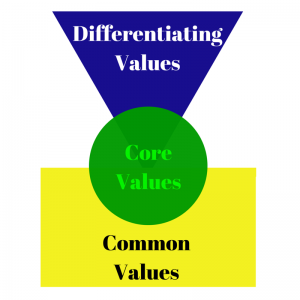5 Ways to Incorporate Altruism into Your Marketing
 Is your marketing connecting with your customers’ heads or hearts?
Is your marketing connecting with your customers’ heads or hearts?
Most marketing speaks to the head. If you study the advertising, sales brochures, and websites of most bigger ticket items, the majority promotes features and benefits: “Our patented quiet design makes it the quietest refrigerator ever.” If there is a real customer benefit stated, it’s generally a rational one: “Our product works twice as fast so you have more time to play golf.”
Connecting with the heart is surprisingly hard to do. When you see a TV ad that tugs at your heart, tens of thousands of dollars (or more) were spent to achieve that effect. The same is true with outdoor billboards, magazine ads, and now viral videos that are shared on Facebook and other social media.
If this kind of emotional marketing is not in your budget, there are other ways to connect with the ‘heart’ of customers. Consider the value of altruism.
The Value of Altruism
As a differentiating value, Altruism means devotion to the interests and welfare of others; unselfish kindness.
Note two important words here: devotion and unselfish.
As a business leader, if your single interest is making money than skip this value. Any attempt to be altruistic in an insincere manner will be quickly perceived by your customers as being false and it will hurt your business in the long run.
But if you truly have a heart and passion to help others, then read on. Altruism might just become the best marketing tool for your business.
Surprisingly, I find many firms struggle with identifying a cause. The single biggest determining factor is this: the business leader(s) need to feel passion about it. If the leader(s) aren’t passionate about it, then it won’t be sustainable.
Still struggling for something to wrap your arms around? Here are a few ideas to get you thinking:
- Support a local soup kitchen
- Raise money for research to stop breast cancer, diabetes or other diseases
- Collect clothes for the homeless
- Donate your services or time to renovate an elderly person’s home
- Sponsor a local sports team, or multiple sports teams
- Build a school in an impoverished area in another country
Some label this cause marketing. Others call it altruism marketing. Regardless of the name, it’s about devoting business resources – money, time, talent, and oft times your products or services – to helping others in need.
And this makes marketing sense.
5 Ways to Incorporate Altruism into Your Marketing
1) Community of Customers. Provide a forum for your customers to make a difference, and connect with each other (e.g. a Facebook group). Make it easy for them to participate, at their comfort level, and share what they’re doing with their friends. And allow them to donate directly to the cause, or recruit others to join in.
2) Inspire with Teamwork. Engage employees to participate and work together to make a difference. Make it easy by providing an outlet for the collective passion of the team. Profile the team’s work on a company blog, and help them to share via social media. Share experiences with customers so they know what employees are doing. Invite local media to talk to employees while serving. Make photos and potential story bylines available to media.
3) Involve more Partners. Don’t be stingy, the more the merrier. Solicit suppliers and other partners to join in your efforts to make a difference. Double the help, double the results. Combine your marketing efforts across your partner list to reach a larger audience. Promote the joint efforts internally and externally. It’ll make you look bigger than you are.
4) Give it Away. Give away your products/services to those in need (e.g. a promotions company supplying jerseys for a baseball team). Or auction off your products and services to raise funds (you might get more). Make the giveaway or auction part of a bigger event that highlights the cause and celebrates those helping. Help the recipients of your products/services spread the news (photos, news stories, etc.).
5) Pay it Forward. Help those in need to participate in the process, to further help others in need (e.g. supporting a former homeless person to help other homeless). Provide an outlet for their stories to be told, through social media and traditional media. Stay connected as the lives of those helped change, shift, and improve.
Altruism doesn’t have to appear as pure social work. Businesses can get involved to make a real difference in their communities. It’s also a great way to connect with the hearts of customers, as well as employees and other partners within their community.
Do you know of a business that has successfully integrated altruism with their marketing? What are they doing that’s different?
Today’s value was selected from the “Appreciation-Kindness” category, based on the e-book Developing Your Differentiating Values.







